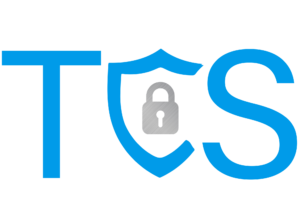Respond – The Fourth Function of CSF
The next logical step in the NIST CyberSecurity Framework is Respond. In other words, how are you planning to respond when a threat to your organization is detected or realized? The Respond function essentially sets forth the processes and procedures enacted for incident response, who will own the issue and oversee its execution, who will be engaged to perform the forensics to determine how the threat gained a foothold in the environment, and what steps should be taken correlative to the risk inherent to the threat.
There are four aspects to the Respond function of CSF:
1. Response Planning
The goal in response planning is to enhance your business or organizational resiliency. Here are some scenarios to consider that we hope would never occur but are likely enough to consider for planning. We’ll start with a very likely incident. What happens if your company loses power? How long can the company network sustain a power outage before it becomes a critical incident? What would happen if your major Cloud provider (Office365, QuickBooks Online, Kronos, etc.) went offline for a month or longer? How would your organization respond? Do you have a Business Continuity plan to cover instances like that?
How would your company be affected by a fire, flood, or tornado? Would your clients and branches be able to maintain communications and business basics? Do you have a Disaster Recovery plan that can cover that?
Of course, some these issues are tertiary to cybersecurity – they impact cybersecurity but may or may not be directly related. What happens if an employee is tricked into opening an attachment that introduces ransomware to the entire network? Or, what happens if one of your security controls indicates a persistent attack from a particular source? What happens if a disgruntled employee attacks the network from within the company? Who is notified, who is responsible for mitigation and remediation, who needs to be alerted and when? What is your Security Incident Response plan? These are all things you need to consider.
Smaller organizations have the benefit of being able to pivot quickly and adjust to unforeseen situations. Larger organization require more thorough planning to survive and adapt to such events. However, we all know that planning ahead of time makes these situations less stressful and easier to overcome. If that weren’t true, EMA and the Military wouldn’t invest so much time in training and preparing their personnel for disaster response. Be sure your response planning includes Business Continuity, Disaster Recovery, and Security Incident Response plans.
2. Communications
This article has already hinted at communications, but it is the key to overcoming any crisis. Technology can help us here, since we all have a smartphone in our pockets; but how will you leverage those technologies in response to an emergency? What do your personnel need to know and expect when normal avenues of communication are not an option? How will you respond in such a way to maintain business as usual while not destroying evidence necessary for the authorities to forensically investigate the incident? Who is going to notify the authorities and what authorities should be notified? How will your clients get in contact with you? How often will you test these plans to ensure you aren’t overlooking a critical roadblock? When do you need to contact your cyber-insurance provider?
There are a lot of questions to consider, which is why leadership must make it a priority to plan out these scenarios. Attempting to make these decisions on the fly will generate incredible chaos and likely will miss better options that would save the company time and money. There are a lot of moving parts to cybersecurity incidents, and the more you plan before you need them, the better your organization will weather the storm of an attack. Defining who communicates with whom and by when will mitigate a lot of unnecessary stress and chaos.
3. Analysis
It’s difficult to talk about one aspect of Response without alluding to others. We’ve mentioned forensics already, but forensics needs to be planned for in the communications stage of an incident response plan. Additionally, forensics needs to be performed and executed.
If you have a cyber-insurance policy, today’s policies often cover forensics up to a certain amount. Depending on your insurance provider, they may want you to notify them (communications again) before doing anything; because they want to ensure the proper authorities are involved before you make changes that will negatively impact their ability to forensically identify how the attack occurred, who was responsible for it, and what can be done to mitigate that threat in the future.
If you have an IT department, you need to have some means for them to perform their analysis from a read-only snapshot archive. This enables analysis to be performed without tampering or contaminating digital evidence. This is where your Protect function comes into play. Those enhanced logging and archiving measures developed and implemented will help both internal and external sources get to the bottom of the issue.
4. Mitigation
Finally, once you’ve identified various threats, it is important to have a plan for isolating those threats from doing any further damage to your organization. For instance, TCS has the ability to immediately isolate a computer from the network as soon as ransomware is detected on it. This effectively enables us to limit the threat exposure to our clients, but ransomware is only one of many threats to our clients.
Different kinds of threats pose different mitigation complications depending on the type of threat. Planning ahead to determine how different threats can be isolated and contained as quickly as possible will help you recover faster with less negative impact to your organization.
Conclusion:
As you can see, the further we get into the functions of CSF, the easier they get. All that front-loading work at the beginning to identify the various types of threats, perform risk analyses, implement protection measures, develop policies and procedures for how personnel will perform critical tasks, makes it much easier to respond to emergent issues.
That being said, there are a lot of moving parts to the incident response plan. If you find that you are overwhelmed by the magnitude of incident response planning and need some consulting or even compliance assistance, please reach out to TCS today! We’d be honored to help you work through these issues and have the best plan possible for your organization to weather just about any storm short of a zombie apocalypse.
Note: This article was based on the resources available at https://www.nist.gov/cyberframework/respond

 Krakenimages by Shutterstock
Krakenimages by Shutterstock iStock
iStock 

 Blue Coat Photos - Flickr
Blue Coat Photos - Flickr 
 Thinkstock
Thinkstock 

 Thinkstock
Thinkstock Blue Coat Photos - Flickr
Blue Coat Photos - Flickr